
DISCLOSURE: This post may contain affiliate links, meaning when you click the links and make a purchase, I receive a commission. As an Amazon Associate I earn from qualifying purchases.
Anyone who’s been baking cakes for a long time will know Tylose powder to be an essential ingredient. However, did you know that Tylose is actually the brand name of a synthetic chemical version of naturally occurring gum tragacanth?
Both gum tragacanth and Tylose powder are widely used in cakes, fondants, jellies, and other sweet treats. It’s also excellent as a thickening agent. But, if you can’t find any and need a Tylose powder substitute – read on! We’re covering six of the best Tylose alternatives available.
What Is Tylose Powder?
Tragacanth is a versatile gum made from the tree sap of several species of the Astragalus plant. Tylose powder is the brand name of an analog of tragacanth called carboxymethyl cellulose (CMC) that’s created utilizing a reaction between cellulose and chloroacetic acid.
Affordable, widely available, and both Vegan-safe and gluten-free – Tylose powder has countless uses to the inventive baker.
[amazon box=”B0013GMLRA”]
It’s a fantastic edible glue used to transform sugar paste into modeling paste for cakes and desserts. Mix Tylose with water, and it turns to glue that’s ideal for gluing decorations to cakes.
Add a coloring, and you’ve got food paint. Now, let’s take a closer look at the best Tylose powder substitutes.
Tylose Powder Substitute
Here are the nine best Tylose powder substitutes available.
1. Food Glue
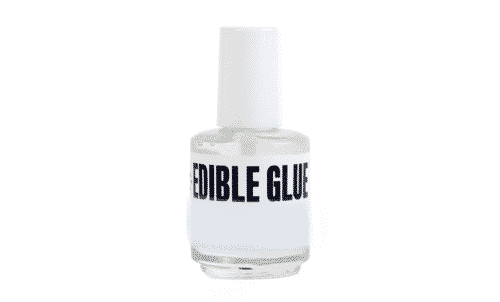
If you can’t get your hands on Tylose powder, go for edible food glue. It’s the closest option out there and ideally mixed for a wide range of applications. Baking a cake, dessert, or pastry? Food glue is your best alternative to Tylose powder.
Food glue is made using a soluble gum paste-like Tylose powder, CMC powder, xanthan gum, and sugarcane paste. It works well as both food glue, as the name suggests, and edible modeling clay. One of the best qualities is just how well food sticks to commercially available edible glue.
Most varieties of food glue contain eggs, gluten, and nuts or have at least been processed in a factory that handles those ingredients. Trace elements left in food glue products make the majority unsuitable to vegetarians and vegans.
2. CMC Powder
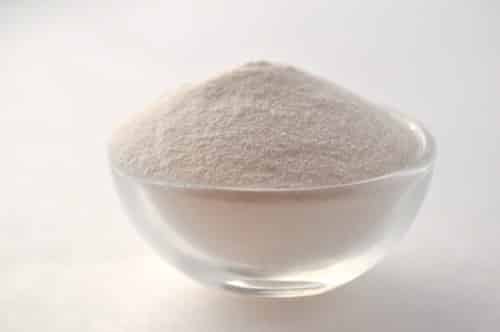
Tylose isn’t the only brand of CMC powder available. Go for alternative suppliers selling carboxymethyl cellulose as the next best option after food glue. A little goes a long way, hardening up pastes and thickening icing and other dessert toppings/ingredients.
CMC powder is ideal for hardening the modeled components of cakes and other baked goods. A teaspoon of CMC makes dough harden to the point of near-solidity.
This is far too hard for most, so if you’re modeling baked goods and desserts at home, go for a ratio of CMC to water at 1:30. You’ll have the right consistency for an edible, moldable dough.
When substituting CMC powder for Tylose directly, it’s best to chill the Tylose and water mixture overnight before use.
3. Tylo Powder or “CMC”
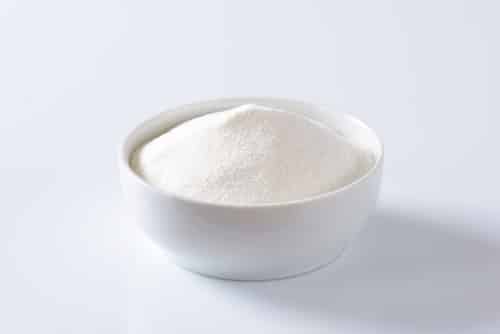
Keep in mind that many manufacturers offer nearly identical copies of Tylose powder. After all, the majority use CMC as a base.
If you can’t find Tylose powder, look for Tylo powder or baking products labeled ‘CMC’ alone. You’ll be able to tell by the ingredients, but if it says Tylo or CMC, you should be good to go.
Tylo powder and similarly marked cake decoration products are widely used in the industry regardless of the variety. All CMC-based powders will need to cool overnight if you plan to use them like glue. Otherwise, add to your dough to reach a firm finish.
4. Gum-Tex

Gum-Tex is another brand-name powder that works great as a Tylose powder substitute. Instead of CMC, Gum-Tex is made from Karaya Gum which is also known as Indian gum tragacanth.
It’s very similar to Tylose but more expensive than most CMC powders and other products competing with Tylose powder. However, it’s cheaper than gum tragacanth and dries a little harder.
Knead Gum-Tex into fondant, and it’ll harden within minutes. It’s one of the quickest drying alternatives and has been criticized for giving a grainy texture when too much is used, so work sparingly.
As food glue, Gum-Tex excels. Blend a tiny amount with a liberal quantity of water, stir well, and in minutes you’ve got glue that anything sticks to.
Most bakers find Gum-Tex to be one of the most versatile Tylose powder substitutes available. If your fondant ends up too thin, then add a little Gum-Tex, and it’ll be as good as new in no time. Add a little more, and you’re ready to shape complex shapes and decorations.
5. Gum Tragacanth
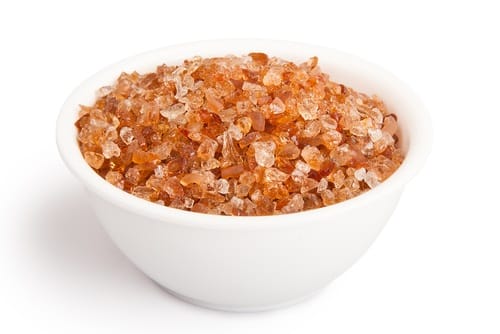
Gum tragacanth powder is the most natural Tylose powder substitute you’ll find and one of the most expensive alternatives.
In addition, depending on where you live, tragacanth powder may also be hard to find. A teaspoon of tragacanth to a pound of fondant is the recommended ratio for hardening, and hardening occurs over 24-hours.
A little gum tragacanth powder can be mixed with water and then child for a few hours to make an effective food glue.
The only drawback to using gum tragacanth is that it gives a yellowish hue to whatever it’s mixed with. However, once it’s prepared, you’ve got a Tylose powder substitute that’s as versatile as it gets.
From molding delicate decorations to hardening fondant for shaping – gum tragacanth works great, but we recommend adding a food dye to counter the yellowing effect. When used as a food glue, the discoloration is, of course, not noticeable.
6. Modeling Paste

Unlike fondant, modeling paste dries completely hard, making it an ideal substitute for Tylose powder solutions. There are many varieties available, and each can be used as food glue or to model shapes, figurines, and decorative details.
Flower & modeling paste work great as an alternative, drying quickly while holding its shape without any difficulty. Of course, you’ve got to mold quickly, but colors grip great, and the final result is smooth and professional.
Standard modeling paste is even easier to handle than flower paste as it takes longer to dry. It’ll be a full 24-hours before your figures and detail are set and hard.
Petal paste is easier to work with than modeling and flower paste, but it takes the longest to dry. Opt for petal paste for wafer-thin details and extremely fine decorative work. Any of these products can be thinned down with water and used as food glue.
7. Cornstarch
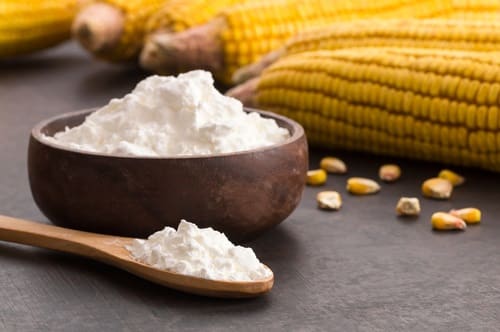
Cornstarch works as an alternative to Tylose powder, but it’s easy to use too much, which will ruin the texture of your dough, glue, or other baked moldings.
Most find cornstarch to work best for cake toppers and other figurines that need a high degree of hardness. Knead cornstarch into your fondant gradually until it’s stiff enough to retain the shape you’re forming.
Please work sparingly with cornstarch because if you add too much, your fondant, cake, icing, or glue will harden so much that it can break your teeth.
Making food glue with cornstarch is easy. First, mix one tablespoon of cornstarch with a quarter cup of water in a separate container. Stir until smooth, working in all of the cornstarch.
Next, dissolve a third of a cup of white granulated sugar in a quarter cup of water in a pot atop a stove. Heat gradually at a low temperature, stirring constantly.
Once dissolved, add in a quarter cup of lemon juice and your cornstarch mixture from earlier. Lower the heat to as low as it can go and continue stirring until the liquid turns opaque.
As soon as it’s opaque, your food glue is ready. Feel free to add food coloring and/or essences and extracts to add color and flavor.
8. Melted Fondant
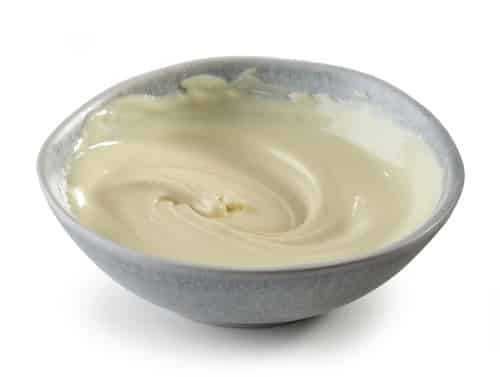
Melted fondant will only work as a substitute for food glue – it’s not a hardening agent. However, if you need edible glue to affix fondant decorations to your cake or dessert, it’s perfect.
Take a tiny ball of fondant and melt it down in a pot of hot water or a dish in the microwave. The sticky goo is a great food glue.
9. Icing Sugar

Icing sugar isn’t ideal but can do a thickening/hardening agent and edible glue. Mix icing sugar and water to create a paste that’ll do the job of food glue if it’s mixed on thick enough.
Kneading icing sugar into fondant will make it thicken and go harder, but it won’t go completely solid. You’ll be able to mold larger decorations, but fine detailing and figurines will need something harder.
Which Is The Best Tylose Powder Substitute?

The best alternative in a pinch will depend on what you’ve got available and what you plan to do with your powder. If you haven’t worked with Tylose powder yet, we suggest that you give the original a try before opting for a substitute.
All of these Tylose powder substitutes will get the job done, but it’s hard to compare which is best suited to your needs until you have a baseline to work from.